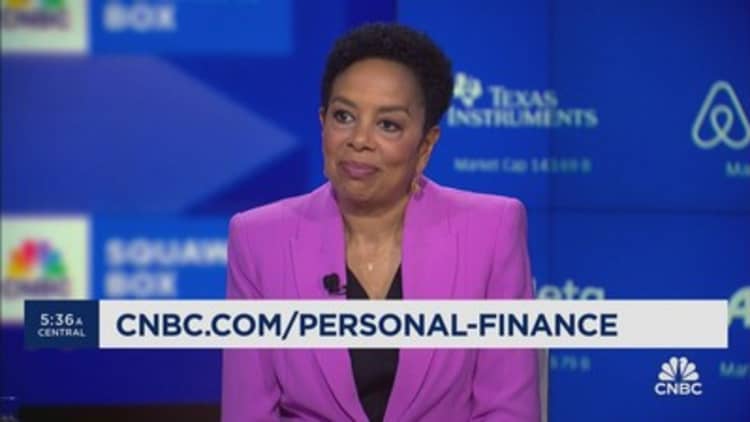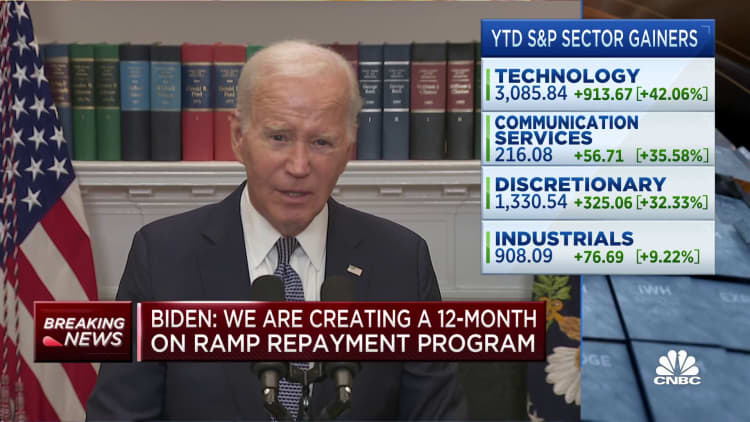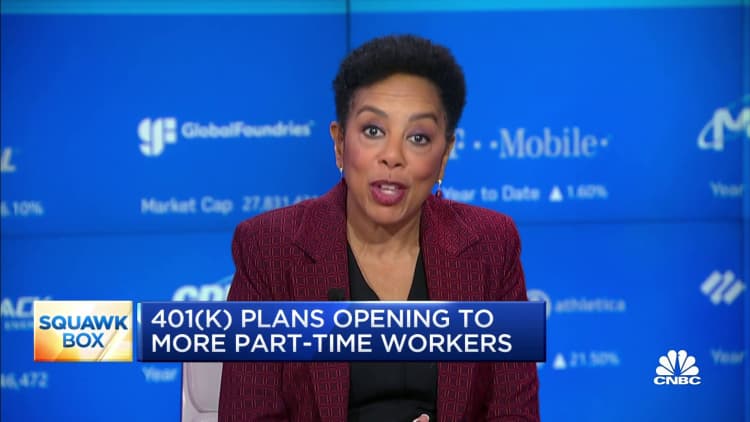In recent months, a tug of war over professional sports unleashed untold sturm und/or drang upon our nation’s capital. But the end result of all that sound and fury?
Personal Finance
A sports stadium boom is coming to America. Is that a good thing?
Published
1 month agoon

After all that noise, Washington’s Capitals and Wizards will stay put in Capital One Arena in downtown D.C. Owner Ted Leonsis will not move to a spanking new facility in Northern Virginia.
That got us thinking: Is it just us, or are fewer stadiums and arenas getting built these days?
We ran the numbers. Only six major sports facilities opened in North America from 2020 to 2024 (including the $1.15 billion renovation of Seattle Kraken’s Climate Pledge Arena, the one case of an overhaul so complete we counted it as a new facility). It’s perhaps the steepest stadium slump we’ve seen since the baby boom.

Construction of stadiums and
arenas hit lull after 2005
Sports facilities built in five-year periods
Source: Bradbury, Coates and Humphreys (2022)
DEPARTMENT OF DATA/THE WASHINGTON POST

Stadium and arena construction hit lull after 2005
Sports facilities built in five-year periods
Source: Bradbury, Coates and Humphreys (2022)
DEPARTMENT OF DATA/THE WASHINGTON POST

Construction of stadiums and arenas
hit lull after 2005
Sports facilities built in five-year periods
Source: Bradbury, Coates and Humphreys (2022)
DEPARTMENT OF DATA/THE WASHINGTON POST
What gives? Do sports teams already have all the space they need? Have taxpayers grown reluctant to finance these monuments to the vanity of billionaire owners?
We called economist J.C. Bradbury, who helped build a database of all 220 major sports facilities constructed in North America since 1909, updating the data that Judith Grant Long gathered for her 2014 book. Billionaire owners aren’t always forthcoming, so they often base their work on “ballpark” estimates from press accounts and other public sources.
“It’s purposefully, in my opinion, obfuscated from taxpayers,” especially in more controversial cases, said Long, a professor of sports management and urban planning at the University of Michigan who first assembled the data for her PhD dissertation in the early 2000s.
Bradbury, who updated Long’s data from his perch at Kennesaw State University, outlined two great waves of sports construction. The first hit in the 1960s as television brought sports to the masses, revenue rose and newly expansionist leagues sprawled across the country.
Those first “super stadiums” were cavernous concrete buckets meant be filled with multiple sports and events — think Houston’s Astrodome or RFK Stadium in the District. Many were built with public funds and envisioned as public resources.
The second wave hit in the late 1990s: An incredible 56 facilities rose from 1995 to 2004 as owners realized they could tap into fresh fire hydrants of money by swapping their generic sports buckets — most still perfectly functional — for venues tailored to specific sports and larded with restaurants, clubs and luxury suites.
The cost to build those sports spaces more than doubled during that second surge of construction even after adjusting for inflation, from a median of $190 million in the 1980s to around $480 million in the 2000s.

Sports facility costs grew
faster than public subsidies
Median cost for stadiums opening each
decade, in 2020 dollars
Source: Bradbury, Coates and Humphreys (2022)
DEPARTMENT OF DATA/ THE WASHINGTON POST

Sports facility costs grew faster than public subsidies
Median cost for stadiums opening each decade, in 2020 dollars
Source: Bradbury, Coates and Humphreys (2022)
DEPARTMENT OF DATA/ THE WASHINGTON POST

Sports facility costs grew faster than
public subsidies
Median cost for stadiums opening each decade,
in 2020 dollars
Source: Bradbury, Coates and Humphreys (2022)
DEPARTMENT OF DATA/ THE WASHINGTON POST
Costs have tripled since the 2010s as facilities become more opulent. Much of that increase has fallen on team owners. But the median public subsidy for an arena or stadium has also grown steadily, from $122 million in the 1980s to $500 million since 2020.
What is the public actually paying for? For the answer, we turned to Geoffrey Propheter, a University of Colorado Denver economist who dredged up more than 100 lease agreements for his book, “Major League Sports and the Property Tax.” Propheter said today’s sports team leases are “complex legal artifacts” with hundreds of pages detailing byzantine financial arrangements that somehow always manage to lower owners’ operating costs and/or their tax burdens.
If you were working on one of these deals, your first move might be to take a chunk out of your property tax bill by giving the dirt under the stadium to the local government, making it — voilà! — untaxed public land. In some places, you would still owe property taxes on the building above the land and on the value of your temporary possession of the land over the term of your lease. But maybe not! Lawmakers might exempt you entirely or count your property tax payments as credit toward rent.
You might even give the building to the local government as soon as the lease is up, when its most profitable days are behind it, leaving taxpayers with “a giant paperweight,” Propheter told us. “Now they’ve got to do something with this pile of concrete and steel,” especially if the lease includes a noncompete clause with a new arena or stadium — and that something might be demolition.
Propheter’s data shows sports team leases, like bell-bottom pants and confused cicadas, are on a roughly 30-year cycle with nearly three-quarters lasting between 25 and 40 years. Since the last sports building boom started around 1995, we could be staring down the barrel of another construction wave: The leases of about 44 teams across four different leagues will expire in the next decade.

More than half of NFL leases ending in next 10 years
Sports facility leases for active major league teams in the U.S.
NFL: 60% of leases ending in next 10 years
Lease ends
between
‘25 and ’34
Only includes teams in publicly-owned facilities
or privately-owned facilities on public land
Source: Geoffrey Propheter
DEPARTMENT OF DATA/THE WASHINGTON POST

More than half of NFL leases ending
over next 10 years
Sports facility leases for U.S. major league teams
NFL: 60% of leases ending in next 10 years
Lease ends
between
‘25 and ’34
Only includes teams in publicly-owned facilities or
privately-owned facilities on public land
Source: Geoffrey Propheter
DEPARTMENT OF DATA/THE WASHINGTON POST

More than half of NFL leases ending in next 10 years
Sports facility leases for active U.S. major league teams
NFL: 60% of leases ending in next 10 years
Leases ending
between 2025
and 2034
Only includes teams in publicly-owned facilities or privately-owned facilities on public land
Source: Geoffrey Propheter
DEPARTMENT OF DATA/THE WASHINGTON POST

More than half of NFL leases ending in next 10 years
Sports facility leases for active U.S. major league teams
NFL: 60% of leases ending in next 10 years
Leases ending between
2025 and 2034
Only includes teams in publicly-owned facilities or privately-owned facilities on public land
Source: Geoffrey Propheter
DEPARTMENT OF DATA/THE WASHINGTON POST
If the majority of those team owners get new facilities, it could produce one of the greatest stadium-construction frenzies in modern history, easily surpassing the Y2K era in sheer dollar terms. Even renovations can have a stunning price tag: The overhaul of Capital One Arena — built for $200 million in 1997 (about $385 million in today’s dollars) — is set to receive a $515 million infusion from D.C. on top of the more than $200 million Leonsis has paid to upgrade the arena since 2014.
You might wonder: Do we need new stadiums? Is something wrong with today’s ballparks?
Not really, unless you consider not raking in as much money as humanly possible to be a defect.
A new stadium ignites what economists call the novelty effect, as interest in the new digs enables owners to crank up ticket prices. Revenue soars in the first few years and remains higher than normal for a decade. A new stadium also lets you copy all the profit-making mechanisms your competitors invented in the decades since you last built a facility, such as spendy dining options and luxury suites with wall-consuming televisions.
The latest trend seems to be sprawling mixed-use developments that promise to create urban entertainment hubs, such as the Battery Atlanta around Georgia’s Truist Park. According to Long, owners are using venue construction “as a Trojan horse … to control larger swaths of land.” By unlocking powerful real estate development tools, a new stadium allows a team owner to create a broader development that captures even more revenue — which, in this case, once went to ordinary barkeeps and restaurant owners hoping to serve the game-day crowds.
“This is often pitched as additional economic development impact,” said Nathan Jensen, a University of Texas at Austin subsidy expert and technically an NFL owner: He grew up in Wisconsin and owns a single share of the Green Bay Packers. But as a result, “people going out for a beer before a game are captured by the developer and are subsidized.”
We may be seeing basic economics at work. New stadiums typically enjoy hundreds of millions of dollars in incentives from local governments. And when you subsidize something, you get more of it, whether you want it or not. Propheter has found that subsidized facilities also tend to be more opulent than their private peers.
Are those subsidies a wise economic investment? Reams of research show that new sports venues don’t generally create promised economic booms. A massive analysis of 42 years of professional sports teams and facilities found that the overall sports environment had an impact on wages — but, uh, not always a positive one. Data on employment and sales found similar results. For example, restaurants and bars near Chesapeake Energy Arena in Oklahoma City benefited from their new neighbor, but others — including nearby entertainment businesses — suffered.
The reality is that money spent on sports doesn’t come out of thin air. It is money that fans might have spent elsewhere. Arenas and stadiums can revitalize a neighborhood by pulling spending from other parts of town, but that’s different from creating new economic activity. While every ownership group argues that their new facility will rejuvenate half the city and make a profit for taxpayers, research shows that sports subsidies simply do not generate the kind of economic benefits they promise to the public.
According to Long, predictions about job creation and sales tax revenue tend to come from the same handful of consultants reusing the same methods that have been inaccurate in the past. On top of that, teams often lowball their estimates of construction costs by covering only part of the true public price tag, leaving out unsexy essentials like sanitation services or transportation infrastructure.
Operating expenses add another wrinkle. Consider Barclays Center in Brooklyn, whose financials our new hero Propheter went through with a fine-toothed comb. Its developer, Forest City Ratner, predicted the arena would make a profit of about $35 million annually. In its first three years, revenue actually beat expectations. But Forest City Ratner’s forecasts dramatically underestimated the arena’s operating and debt-servicing costs, which were about twice as high as expected, driving profits down from $35 million to a maximum of $6 million per year.

Expenses exceeded forecasts
at Barclays Center
Expenses include operating expenses and
debt servicing
DEPARTMENT OF DATA/THE WASHINGTON POST

Expenses far exceeded forecasts at Barclays Center
Expenses include operating expenses and debt servicing
DEPARTMENT OF DATA/THE WASHINGTON POST

Expenses exceeded forecasts at Barclays Center
Expenses include operating expenses and debt servicing
DEPARTMENT OF DATA/THE WASHINGTON POST
So why do local officials keep shoveling out money for new stadiums and arenas? It’s partly that sports owners threaten to leave, as Leonsis did late last year, but it’s not just that. Teams have been known to get new facilities without another suitor waiting in the wings.
Data can’t really help here, but according to Bradbury, powerful people may just like sports.
“Politicians love two things: jocks and movie stars,” he told us. And it’s bipartisan: “Democrat and Republican can both agree, ‘We’ve got to have a stadium.’”
Hello there, Data Hive! The Department of Data craves questions. What are you curious about: How have major cities skylines changed over the decades? What are Wall Street’s biggest investors? How did our spending change after the coronavirus pandemic? Just ask!
If your question inspires a column, we’ll send you an official Department of Data button and ID card. This week’s button goes to Nathan Cutler in San Salvador, who asked about the economic impact of stadiums on neighborhoods.
You may like
Personal Finance
Here are key things to know about company stock, experts say
Published
2 weeks agoon
May 4, 2024
Prasit photo | Moment | Getty Images
As employers compete to attract and retain talent, equity compensation — or an ownership stake in the company — has become a key workplace benefit.
Some 72% of companies offer some form of equity compensation to certain employees, a 2023 survey from Morgan Stanley found. That’s up from 65% in 2021.
These perks motivate employees and boost their long-term investing goals, according to the Morgan Stanley survey, which polled 1,000 U.S. employees and 600 human resource executives.
However, some “miss the opportunity” because they don’t understand it, said certified financial planner Chelsea Ransom-Cooper, chief financial planning officer for Zenith Wealth Partners in New York.
More from Personal Finance:
This job perk is like a ‘cash bonus’ — but you need a long-term strategy, experts say
Employee stock purchase plans offer ‘free money’ — but also carry complexity and risk
Treasury Department announces new Series I bond rate of 4.28% for the next six months
Here’s what to know about three popular types of stock-based compensation, experts say.
There’s potential for ‘life-changing wealth’
Many employees receive so-called stock options as part of their compensation, which are the right to buy or “exercise” company shares at a preset price within a specific timeframe.
“It’s almost iconic to grant stock options in a startup private company,” said Bruce Brumberg, editor-in-chief and co-founder of myStockOptions.com, which covers various types of equity compensation.
Startups want to create the drive and incentive of ownership culture with the potential for “life-changing wealth,” he said.
Stock options become valuable when there’s a discount between your preset price and the market value, which makes it more attractive to exercise. However, the taxes can be complicated, depending on the type of stock options.
Incentive stock options can offer some tax benefits — if you meet certain rules — but could trigger the alternative minimum tax, a parallel system for higher earners.
Photo by LanaStock via Getty Images
By comparison, the more common nonqualified stock options generally have less favorable tax treatment and you’ll owe regular income taxes on the discount upon exercise.
But even with an initial discount, there’s no guarantee a company’s stock price won’t decrease after exercising a stock option.
“It could be worth nothing but a piece of paper,” Ransom-Cooper from Zenith Wealth Partners said.
Restricted stock units are ‘like a cash bonus’
Another benefit, restricted stock units, or RSUs, are company shares granted upon hiring, which vest over time. RSUs can also be tied to performance-based goals.
Some 94% of public companies offer RSUs to at least middle managers, according to a 2021 survey from the National Association of Stock Plan Professionals.
“I like to think of it like a cash bonus,” said Pittsburgh-based CFP Matthew Garasic, founder of Unrivaled Wealth Management.
I like to think of it like a cash bonus.
Matthew Garasic
Founder of Unrivaled Wealth Management
For example, if the stock price is $10 and 100 shares vest, it’s treated like $1,000 in compensation for that year, and the standard withholding of 22% might not be enough, depending on your tax bracket, he explained.
After vesting, the decision to sell or hold RSUs depends on your short- and long-term investing goals.
“We like to establish a target of what they like to hold in company stock,” said Garasic, who aims to keep allocations of a single stock to 10% or less. “Once we get above that target, we just sell at vest.”
Employee stock purchase plans offer ‘free money’
Many publicly traded companies may also offer discounted company shares via an employee stock purchase plan, or ESPP.
“There’s free money to be had” with an ESPP, Garasic explained.
However, the decision to participate typically depends on your short-term financial goals.
After enrolling, your ESPP collects a portion of after-tax money from each paycheck and uses the funds to buy discounted company stock on a specific date.
The gold standard is a 15% discount with a lookback feature, which bases the stock purchase price on the value at the beginning or end of the offering period, whichever is lower, experts say.
Any time you’re investing in a single company, there’s certainly a big risk.
Kristin McKenna
President of Darrow Wealth Management
You can typically sell after a set period, but there’s no guarantee you’ll make money, even with the built-in discount.
“Any time you’re investing in a single company, there’s certainly a big risk,” CFP Kristin McKenna, president of Darrow Wealth Management in Boston, previously told CNBC.
Yearly goals like investing up to your employer’s 401(k) match should come before your ESPP, especially with limited income, she added.

Personal Finance
Public Service Loan Forgiveness program will go on partial pause
Published
2 weeks agoon
May 3, 2024
Teacher teaching her students in art class at school.
Fg Trade | E+ | Getty Images
The popular Public Service Loan Forgiveness program began a partial processing pause on May 1, which will likely run through July, the U.S. Department of Education recently said.
The temporary suspension comes as the Biden administration overhauls the once-troubled federal student loan program.
Here’s what borrowers should know.
Why the pause is happening
The PSLF program, signed into law by President George W. Bush in 2007, allows certain not-for-profit and government employees to have their federal student loans canceled after 10 years of on-time payments.
However, the program has been plagued by problems, making people who actually get the relief a rarity.
Borrowers often believe they’re paying their way to loan cancellation only to discover at some point in the process that they don’t qualify, usually for confusing technical reasons. Lenders have been blamed for misleading borrowers and botching their timelines.
More from Personal Finance:
Advice about 401(k) rollovers is poised for a big change. Here’s why
IRS free filing pilot processed more than 140,000 returns, commissioner says
Here’s why new home sales inch higher despite 7% mortgage rates
The Biden administration has been trying to reform the program. As part of that overhaul, it is changing how loan servicing works for public servants, and some of the customer service will soon be handled by the government itself.
“After the improvements, PSLF borrowers will have all of their PSLF information centralized on StudentAid.gov so that the Department can provide real-time and more accurate information on payment counts and form processing,” the Education Department wrote in a recent blog post.
Previously, only one company managed the servicing for PSLF borrowers on behalf of the government: first, FedLoan, and more recently, Mohela, or the Missouri Higher Education Loan Authority. Going forward, a number of different companies will service the accounts, along with the Education Department.
What borrowers can expect during the transition
The Education Department will not review PSLF form submissions for roughly a two-month period, it says. (The exact dates will depend on how long the changes take place to complete.)
Meanwhile, from May 1 through July, it says, “borrowers will not be able to see their PSLF payment counts on MOHELA’s website.”
“During the transition, PSLF forgiveness will be suspended,” said higher education expert Mark Kantrowitz.

Borrowers will be able to continue making their loan payments, and these months will count on their timeline to loan forgiveness. Borrowers should also be able to submit a form to certify public service employment and to apply for loan forgiveness if they are at the 10-year mark.
“Forms will be reviewed as soon as the transition is complete,” the Education Department says.
If you qualify for debt cancellation during the transition, you can request a forbearance from your servicer in the meantime, it says, adding that any overpayments should be refunded.
Don’t miss these exclusives from CNBC PRO
Personal Finance
Your Roth 401(k) after-tax matching contribution could trigger taxes
Published
2 weeks agoon
May 3, 2024
If you’ve opted into your employer’s Roth 401(k) after-tax matching contributions this year, it could trigger a tax surprise without proper planning, experts say.
Enacted in 2022, Secure 2.0 ushered in sweeping changes for retirement savers, including the option for employers to offer 401(k) matches in Roth accounts. These accounts are after-tax, meaning employees pay upfront taxes but growth and withdrawals in retirement are tax-free. Previously Roth 401(k) matches went into pretax accounts.
Roughly 12% of employers with 401(k) plans said they are “definitely” adding the feature and 37% are “still considering it,” according to a recent survey from the Plan Sponsor Council of America.
However, those new matching Roth contributions could have “unintended consequences” at tax time, according to Tommy Lucas, a certified financial planner and enrolled agent at Moisand Fitzgerald Tamayo in Orlando, Florida.
More from Personal Finance:
IRS aims to more than double its audit rate on wealthiest taxpayers
Here are three ways to lower your credit card annual percentage rate, experts say
Why your financial advisor may not give you the best Social Security advice
“If you go this route, you’ll want to know that you’re basically getting extra income” and taxes aren’t automatically withheld, Lucas said.
“You’re increasing your adjusted gross income by taking this match as a Roth,” he said.
“If you go this route, you’ll want to know that you’re basically getting extra income.”
Tommy Lucas
Financial advisor at Moisand Fitzgerald Tamayo
For example, let’s say your salary is $100,000 with a 6% employer match in 2024. If you designate your $6,000 employer match as Roth and you’re in the 22% federal income tax bracket, you could have an extra $1,320 in tax liability, according to Lucas.
“There’s probably something on top of that for state income taxes,” depending on where you live, he said.
Plus, you won’t see your employer’s matching Roth contribution reported on Form W-2, according to IRS guidance released late last year. Instead, you’ll receive Form 1099-R, which could be confusing, Lucas said.
How to plan for income from Roth 401(k) matches
If you’ve chosen your company’s Roth matches for 2024, you need to prepare for the extra income, said CFP Jim Guarino, managing director at Baker Newman Noyes in Woburn, Massachusetts. He is also a certified public accountant.
You can increase your federal and state withholdings with your employer or boost your quarterly estimated tax payments, he said.

For example, if you expect to incur $1,320 more in federal taxes, you could divide that amount by your remaining 2024 paychecks and include that “extra withholding” on Form W-4 for your employer, Lucas said.
Of course, you’ll need to double-check that the change is reflected on future paychecks, he said.
“In either case, working with a trusted tax advisor would help to optimize overall tax planning and eventual tax reporting for the year,” Guarino added.
Don’t miss these exclusives from CNBC PRO

Betting on the Kentucky Derby? Here’s how to think like a professional handicapper.

Warren Buffett says Greg Abel will make Berkshire Hathaway investing decisions when he’s gone

EV makers win 2-year extension to qualify for tax credits

Are American progressives making themselves sad?

‘Best Firms for Tech’ 2024 deadline extended to April 10

